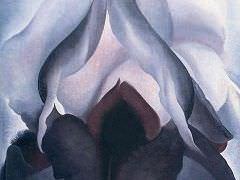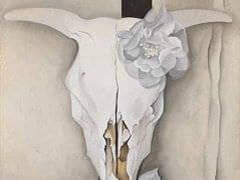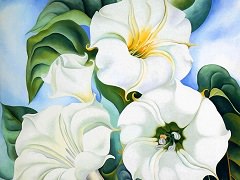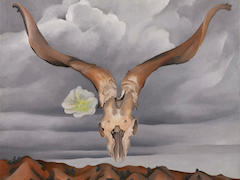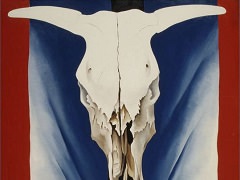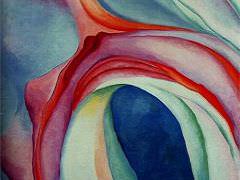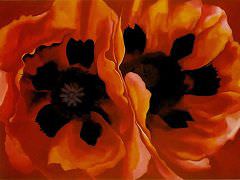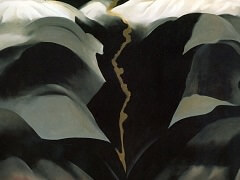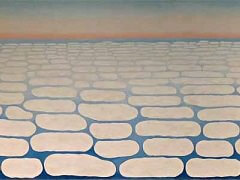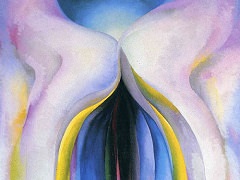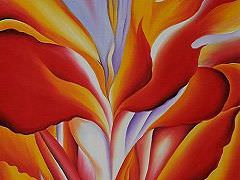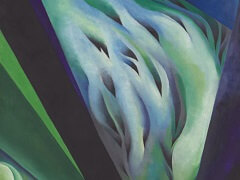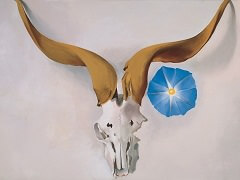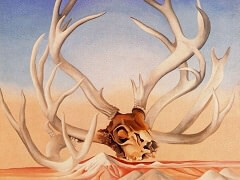Abstraction White Rose, 1927 by Georgia O'Keeffe
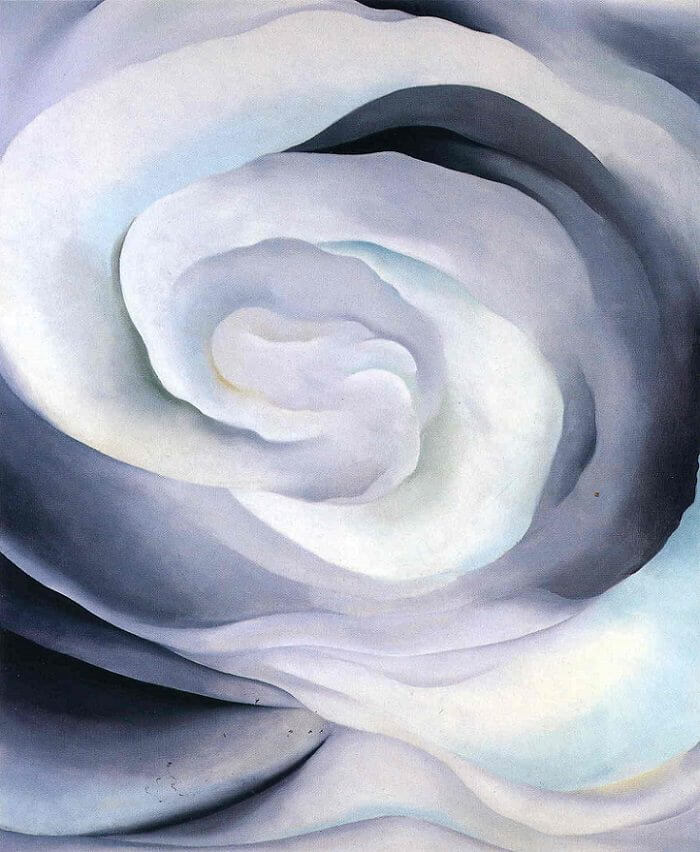
By the early 1920s, when O'Keeffe turned her attention to representational painting, she had used flowers as subject matter for almost two decades and had been exposed to advanced photographic techniques for at least half a decade.
Thus, it is not surprising that what she did with flowers in the 1920s and thereafter was largely the result of combining the principles she learned from photography with those of the composition-based thinking of Arthur Wesley
Dow that she had first learned about in the 1910s and would subsequently explore through course work with Dow at Teachers College. His modernist ideas had derived from his study of world art, in particular, that of Asia, and he
believed that the study of compositions was the most important consideration of an artist.
In 1924, O'Keeffe began to make paintings in various sizes, all of which focused on the centers of flowers, and she continued making them for decades.
Abstraction White Rose is one of her earlier large-scale flower paintings
Many critics missed O'Keeffe's point. They interpreted her flowers as they had interpreted her earlier abstractions, as expressions of her sexuality. In 1943, O'Keeffe finally responded:
Well - I made you take time to look at what I saw and when you took time to really notice my flowers you hung all your own associations with flowers on my flower and you write about my flower as if I think and see what you think and see of the flower - and I don't."

